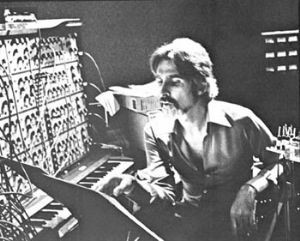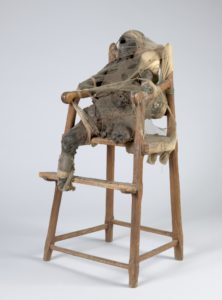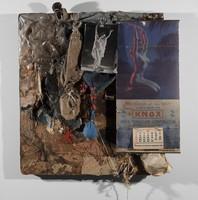After I moved to San Francisco in the 1960s to teach in the English Department at San Francisco State, I spent some time prowling the city’s art scene—SFMOMA (then the San Francisco Museum of Art), the de Young, and a few galleries. In general it was pretty plain that San Francisco was the sticks—that the big energy was still in New York.
Somewhere in the midst of the relative parochialism was a completely outrageous artifact—a life-size black wax baby, melted and burned, bound by a web of torched stockings into some cruel parody of a high chair. The artist was Bruce Conner. I’d never heard of him. But this wasn’t regional art, it was the real thing: relevant, burned alive, and disgusting. It didn’t need an overtly political title, like “Hiroshima.” It was just called CHILD.
A couple of years later I was making music—primitive stuff on an early Buchla synthesizer, but using a collage technique much like Bruce’s, except with sound. I’d record stuff I’d hear on the M trolley, in public places, at construction sites, at parties, in the woods, and so on, and then collage it together to produce some new meaning.
By 1967 I’d been performing this material in various underground spaces, mostly hippie places like the Avalon Ballroom. I thought it was time to do something more ambitious, namely to create a Happening at SFMOMA. Never mind that I had no credentials, or familiarity with Happenings, a largely East Coast phenomenon I’d only read about.
I visited the museum, asked to speak to the director, Gerald Nordland, and told him what I intended. Strangely, he only objected that the schedule was filled for a couple of months. Could I wait until then? Such was the delightful and long-gone amateurism of art in the 1960s.
I assembled a blues rock band, wrote a couple of way-too-Dylanesque half-sung, half-growled elegies—one to John Muir, the other to Walt Disney—and asked Ben Van Meter to come aboard with his light show, a favorite at the hippie ballrooms of the period.
Bruce was part of Ben’s troupe. He announced to the amazed museum employees installing the name of the light show on the museum’s reader board that unless “N. A. Ibis Alchemical Company” was changed to “North American Ibis Alchemical Company,” the group’s proper name, there would be no show. “Uncompromising” is one way of describing Bruce, which would be my way. Others, over his long career, thought he was “completely crazy.” He was that too, of course.
Bruce was irritated by Ben’s refusal to give up the idea of rear projection, and wanted to project all the light show’s cartoon loops, crashing zeppelins, and liquid projections directly onto the audience. So toward the end of the evening he suddenly ran out and toppled the screens, which narrowly missed a few attendees. The projections were now blindingly cast onto the crowd’s faces.
After the event a friend came up and congratulated me, saying, “You know, I had my doubts until the very end when the screens came down. Then, finally, I really understood what you were doing—it was so cool!”
Another year passed. By then I’d gotten political, destructively so for a college professor: I had been named a “commie dupe” by the 1967 House Un-American Activities Committee, gone to jail for sitting in, and embarrassed my department chairman with my hippie musings on free love and drugs (one does come to such enthusiasms somewhat colder by and by). I was probably on my way out anyway, and so I quit. From then on my main activity would be making music.

Patrick Gleeson
About a month later Bruce showed up at the front door of our commune unannounced, carrying a large package. He said that he’d heard I’d quit teaching and was now going to be a full-time artist. He smiled a little, said, “You’re going to need this,” thrust the package into my hands, ran back down the steps, and was gone. The package contained an original collage, KNOX, now in the collection of the Dallas Museum of Art. Our strange friendship had begun.
The relationship was always older brother/younger brother, which I fully accepted. Bruce was, it turned out, the model of how to conduct yourself as an artist in twentieth-century America. It wasn’t easy. As my own career progressed, he criticized what he thought was merely commercial (almost every movie I ever scored). He’d drop by every few weeks to listen to me improvise on synths, his presence encouraging me to do something better, more immediate. One time he demanded: “Why is it your music for me sounds different from all your other music?” It was not really a question. Bruce helped (encouraged? bullied?) me to compose—weird or not—what was really on my mind. We continued to collaborate for another forty years.

